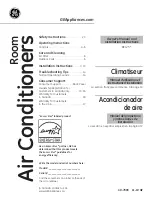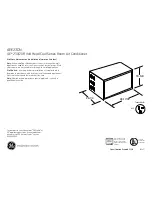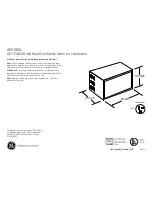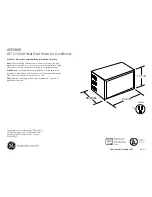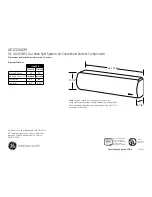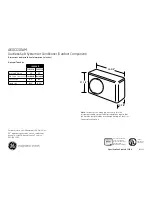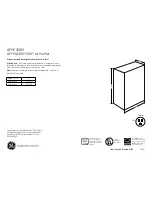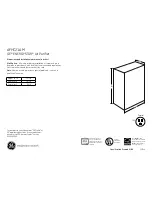
7
Fig. 1
Fig. 2
Fig. 3
Fig. 4
Fig. 5
Fig. 6
3. FLARING WORK AND PIPE CONNECTION
3-1. FLARING WORK
Pipe diameter
[mm (inch)]
Nut
(mm)
A [mm (inch)]
Tightening torque
Clutch type tool
for R410A
Clutch type tool
for R22
Wing nut type tool
for R22
N•m
kgf•cm
ft·Ib
ø6.35 (1/4)
17
0 to 0.5
(0. to 0.02)
1.0 to 1.5
(0.04 to 0.06)
1.5 to 2.0
(0.06 to 0.08)
13.7 to 17.7
140 to 180
10 to 13
ø9.52 (3/8)
22
34.3 to 41.2
350 to 420
25 to 30
ø12.7 (1/2)
26
2.0 to 2.5
(0.08 to 1.0)
49.0 to 56.4
500 to 575
36 to 42
ø15.88 (5/8)
29
73.5 to 78.4
750 to 800
54 to 58
Tilted Uneven Burred
Good
No good
Burr
Copper pipe
Spare reamer
Pipe cutter
Smooth all
around
Even length
all around
Inside is shin-
ing without any
scratches.
Flare nut
Die
Copper pipe
Clutch type
Flaring tool
Wing nut type
3-2. PIPE CONNECTION
• Fasten flare nut with a torque wrench as specified in the table.
• When fastened too tight, flare nut may brake after a long period and
cause refrigerant leakage.
Outdoor unit connection
Connect pipes to stop valve pipe joint of the outdoor unit in the same
manner applied for indoor unit.
• For tightening, use a torque wrench or spanner and use the same
tightening torque applied for indoor unit.
3-3. INSULATION AND TAPING
1) Cover piping joints with pipe cover.
2) For outdoor unit side, surely insulate every piping including valves.
3) Using piping tape (E), apply taping starting from the entry of outdoor
unit.
• Stop the end of piping tape (E) with tape (with adhesive agent at
-
tached).
• When piping have to be arranged through above ceiling, closet or
where the temperature and humidity are high, wind additional com
-
mercially sold insulation to prevent condensation.
Copper
pipe
1) Cut the copper pipe correctly with pipe cutter. (Fig. 1, 2)
2) Completely remove all burrs from the cut cross section of pipe. (Fig. 3)
• Put the end of the copper pipe to downward direction as you
remove burrs in order to avoid to let burrs drop in the piping.
3) Remove flare nuts attached to indoor and outdoor units, then put them
on pipe having completed burr removal. (Not possible to put them on
after flaring work.)
4) Flaring work (Fig. 4, 5). Firmly hold copper pipe in the dimension
shown in the table. Select A mm from the table according to the tool
you use.
5) Check
• Compare the flared work with Fig. 6.
• If flare is noted to be defective, cut off the flared section and do
flaring work again.
SG79Y871H02.indb 7
9/7/2007 1:09:41 PM
























